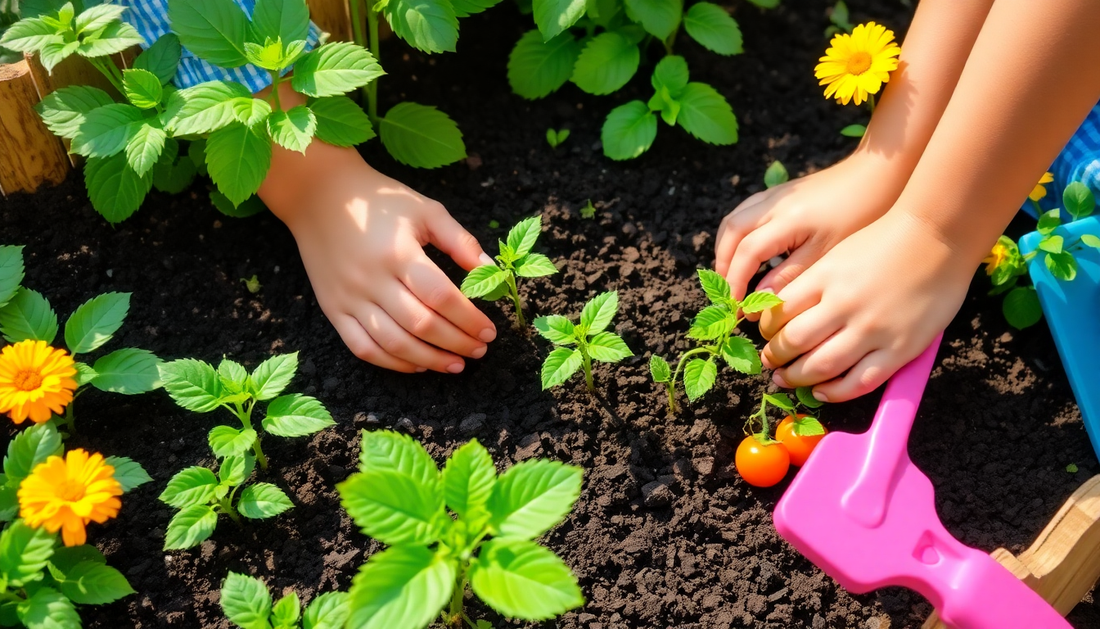
The Best Plants for a Kid-Friendly Home Garden in Sarjapur
As a parent, creating a safe and engaging outdoor space for your children is a top priority. When it comes to designing a kid-friendly home garden, the choice of plants is crucial. Not only do you want to ensure your little ones' safety, but you also want to foster their curiosity and love for nature.
In this comprehensive guide, we'll explore the best plants for a kid-friendly home garden in the Sarjapur area of Bangalore. Whether you're starting from scratch or looking to revamp your existing outdoor space, these recommendations will help you cultivate a thriving, child-safe oasis.
Choosing Kid-Safe Plants
When selecting plants for a family-friendly garden, it's essential to prioritize safety. Many common houseplants and garden varieties can be toxic if ingested, posing a risk to curious children. To create a truly kid-safe environment, focus on non-toxic, low-maintenance species that are unlikely to cause harm if explored.
Non-Toxic Succulents
Succulents are an excellent choice for a kid-friendly garden. These hardy, low-water plants are not only visually appealing but also generally non-toxic. Some top picks include:
- Jade Plant (Crassula ovata)
- Echeveria
- Hen and Chicks (Sempervivum)
- Aloe Vera
Succulents are easy to care for, making them a great option for families with busy schedules. They also have a tactile appeal that can captivate young minds, encouraging hands-on exploration.
Flowering Perennials
Introduce vibrant, child-safe blooms to your garden with these perennial favorites:
- Marigolds (Tagetes)
- Zinnias
- Cosmos
- Sunflowers (Helianthus)
These flowers not only add pops of color but also attract beneficial pollinators like bees and butterflies, providing endless opportunities for observation and learning.
Fragrant Herbs
Herbs are a wonderful addition to any kid-friendly garden, as they engage multiple senses. Consider planting fragrant, non-toxic varieties such as:
- Lavender (Lavandula)
- Rosemary (Rosmarinus officinalis)
- Lemon Thyme (Thymus citriodorus)
- Peppermint (Mentha piperita)
Encourage your children to gently brush the leaves and take in the soothing aromas. You can even incorporate these herbs into your cooking, fostering a connection between the garden and the kitchen.
Designing a Safe, Engaging Layout
When planning the layout of your kid-friendly garden, consider both safety and play value. Incorporate elements that stimulate the senses and encourage exploration, while ensuring potential hazards are minimized.
Sensory Pathways
Create meandering pathways that invite little ones to wander and discover. Line the paths with a variety of textures, such as smooth river rocks, soft moss, or crunchy gravel. This multi-sensory experience will captivate their curiosity and encourage active engagement with the garden.
Designated Play Areas
Designate specific zones within your garden for play and exploration. This could include a sandbox, a small climbing structure, or a mud kitchen area. These dedicated spaces allow children to interact with the natural environment in a controlled, safe manner.
Hiding Spots
Incorporate small, hidden nooks and crannies where children can play hide-and-seek or simply enjoy a moment of solitude. Strategically placed boulders, low-growing shrubs, or even a playhouse can provide these enchanting hideaways.
Water Features
The soothing sound of water can be a powerful draw for children. Consider installing a shallow, child-safe water feature, such as a bubbling fountain or a small, gently sloping stream. Just be sure to include appropriate safety measures, such as fencing or netting, to prevent accidental falls.
Engaging Your Little Gardeners
Cultivating a kid-friendly home garden is not just about creating a safe space – it's also about fostering a love for nature and nurturing your children's innate curiosity. Engage your little ones in the gardening process to encourage a lifelong appreciation for the great outdoors.
Hands-On Exploration
Encourage your children to get their hands dirty by involving them in planting, watering, and tending to the garden. Provide child-sized tools and let them experience the joy of watching their plants grow.
Educational Signage
Incorporate educational signage throughout your garden, highlighting the names and characteristics of the various plants. This can spark conversations about the natural world and inspire further learning.
Scavenger Hunts
Create engaging scavenger hunts that challenge your children to find different leaves, flowers, or insects within the garden. This encourages close observation and a deeper appreciation for the diverse ecosystem.
Seasonal Celebrations
Mark the changing seasons with special garden-themed events, such as a spring bulb-planting party or a fall leaf-collecting activity. These traditions will create lasting memories and foster a connection to the rhythms of nature.
By thoughtfully selecting kid-safe plants, designing an engaging layout, and actively involving your children, you can create a thriving, family-friendly home garden in Sarjapur. This oasis will not only provide a safe, stimulating environment for your little ones but also cultivate a lifelong love for the natural world.
Conclusion
Designing a kid-friendly home garden in Sarjapur requires careful consideration of plant selection, layout, and engagement strategies. By prioritizing safety, sensory exploration, and educational opportunities, you can transform your outdoor space into a vibrant, child-safe haven.
Remember, the key to a successful family garden is finding the right balance between functionality and fun. With the right plants, design elements, and interactive experiences, you can create a space that your children will cherish for years to come.
So, let's get started on your journey to cultivating the best plants for a kid-friendly home garden in Sarjapur. Embrace the wonder of nature, and watch as your little ones blossom alongside your thriving oasis.







No comments